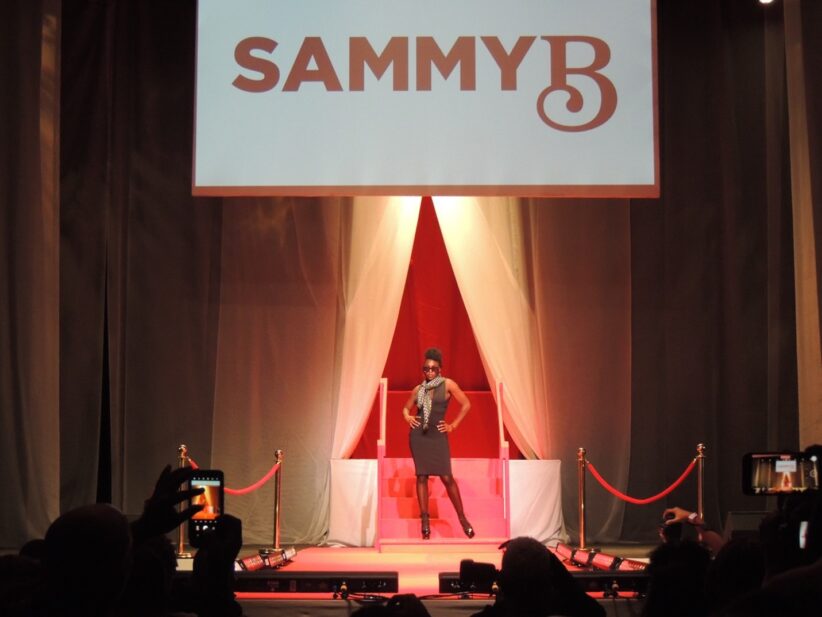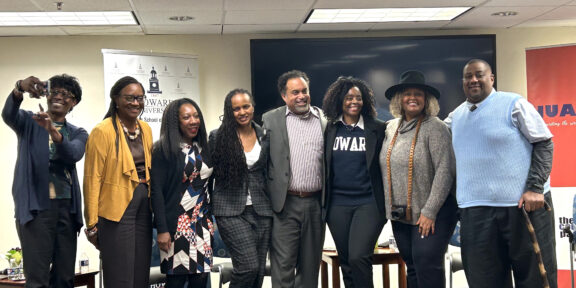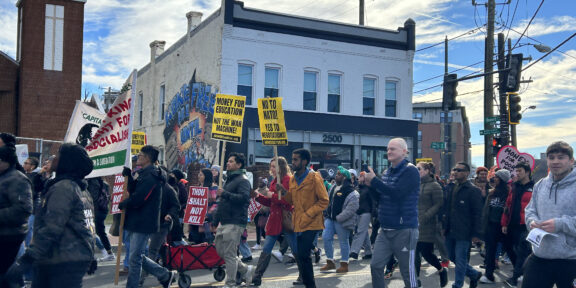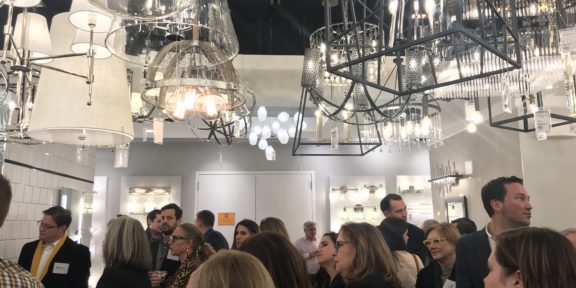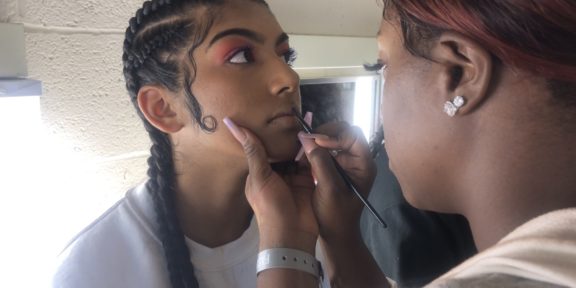By MeKayla Pierre
Howard University News Service
The last few years have seen the resurgence of social justice movements into the mainstream view, specifically the Black Lives Matter protests of 2020. Although many of these issues date back to the civil rights era, the recent social reckoning brought them to the forefront for many who typically go unaffected.
The fashion industry, for example, has a history of disregarding calls for diversity. But for an industry that has profited from influencing its consumers to believe that their natural attributes are “unacceptable”, it’s unsurprising that its beauty standards rarely stray from that of the European variety. Nor is it surprising that the racial bias that informs these standards is the same that influences the decision of who succeeds within the industry and who does not.
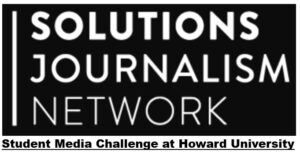 This racial bias permeates every corner of the industry, reaching designers, models, stylists, writers, photographers, executives, and many other professions. As a result, Black people have been hindered from reaching new heights in an industry that continues to advance on the backs of their contributions.
This racial bias permeates every corner of the industry, reaching designers, models, stylists, writers, photographers, executives, and many other professions. As a result, Black people have been hindered from reaching new heights in an industry that continues to advance on the backs of their contributions.
However, it would be a disservice to imply that the push for diversity in fashion started alongside the recent initiatives of less creative industries.
The appearance-based nature of fashion made the lack of racial diversity impossible to ignore in the more public-facing parts of the industry such as publications and runways. The 70s and 80s took major steps to close that gap with the rise of supermodels like Iman, Beverly Johnson, Naomi Campbell, Beverly Peele, etc. But as the repeal of Roe v. Wade has demonstrated, progress can disappear even faster than it’s made.
Fashion is no stranger to fluctuations, and the early aughts saw the disappearance of the Black models who were previously making huge strides in fashion shows and magazine covers. This was a major step back in the progression of the industry that took a decade’s worth of concentrated efforts from industry veterans to undo.
But this time around, the focus has expanded beyond models to encompass the obstacles holding back Black creatives in every corner of the industry. Those creatives are taking the lead in either holding those in power accountable for letting racial barriers stand or knocking down those barriers themselves.
Aurora James, fashion designer and creative director, took on the task with the Fifteen Percent Pledge, a challenge to retailers to dedicate 15% of their shelf space to Black-owned brands. With the pledges of over 28 retailers, James’ initiative has been able to generate almost $10 billion in revenue for Black-owned businesses.
And while these tangible numbers are great for demonstrating a general step in the right direction, and a PR lifeboat for corporations drowning in social accountability, the impact of this financial backing isn’t as far-reaching as some would like. Instead, they are looking for racial equity to be reflected within the company as well since the lack of representation within the employment of companies that claim to represent a diverse audience has been a point of contention for many.
Namely, Refinery29 is a publication whose lack of diversity caused a backlash so severe it forced them to reevaluate those who held the top positions within the company. Within a week of changing the color of their website to Black in solidarity with the Black Lives Matter movement, Christene Barberich, the site’s co-founder and editor-in-chief, stepped down from her position. The whirlwind of events that led to her resignation consisted of claims of racism and a lack of diversity within the company from former employees.
Many felt especially blindsided by this exposé as Refinery29 had positioned itself as a voice for empowered women, surpassing its peers in inclusivity by creating Unbothered, a platform that elevates Black women and Black culture. The brand championing diversity only for it to not be reflected within the company was a perfect example of the reality of the industry as a whole.
The company used Barberich’s exit as an opportunity to appoint someone who could uphold the values the brand claimed to be founded on. This is when Simone Oliver made her entrance as the Global Editor-in-Chief.
She spoke on her experience being recruited for the role when the company was under intense scrutiny. “I asked the CEO when I interviewed with her ‘are you coming to me because I’m Black?’, like I’m about to be a human broom, coming in here and cleaning up your mess,” she said. “I think a younger me wouldn’t have asked that question. I loved the opportunity, but I was like I’m not stupid, you know? I see what’s going on here.”
She attributed her willingness to leave Facebook and Instagram for this position to Refinery29’s initial reputation. “I remember when Refinery first started and the way they changed the game in a lot of different ways,” Oliver recalled. “There were very few calls at that time that I would’ve answered. But then there was also the opportunity to be like, all right, you understand the circumstances, but you can come here and change the tone. You’ll have a certain amount of agency to change the legacy.”
This wave of companies working to change the tone sparked a discussion on the intention behind giving Black people a seat at the table. It begs the question: if Black people are finally getting into the room, does it matter why they opened the door?
“What’s important to me is that I’m able to make an impact,” she said. “And so, the fact that I was able to do that in the time I was there, I know that the culture of the team did not look like that when I came in and I know how I left it. I know the nature of the content, the scope of it, and the tone of it changed.”
Oliver believes there are a few ways that companies can make those same changes going forward. “I know there’s a lot of old school models for recruitment, and I’ve heard too many people say ‘I don’t know where to find Black talent’,” She says. “I went to Howard, so there’s no reason why anyone in the industry should be talking about they don’t know where to find Black talent. The talent pipeline needs to be broken, rebuilt, and fortified.”
She places the responsibility of rebuilding those pipelines, and circumventing the nepotistic route, on hiring managers. “If you’re a hiring manager, even if you’re not talking about a specific role, you should be going to the academic leadership who are helping their students get in touch with the right people,” Oliver says. “You put the word out for a role and people put the word out in the same pool. It’s an opportunity for media companies to make sure they’re reflecting the world around them.”
However, the quick turnaround on the changes that companies are making has forced many to call into question their motivations behind doing so.
If there’s always been a qualified Black woman ready to take the lead, then why only give her the reins now? Have these businesses finally recognized the harm that’s being done because they’ve neglected to take action or have they simply recognized the potential harm to their profits?
A 2018 study conducted by McKinsey found that ethnically diverse executive teams diversity were 33% more likely to “outperform their peers on profitability”, while companies without that diversity are more likely to underperform their peers by 29%.
While studies like these display the incentive that companies may have to invest in Black leadership, there are others within the fashion industry that see diversity from the ground up as the base requirement for inclusion. Lindsay Peoples Wagner, Editor in Chief at The Cut, and Sandrine Charles, public relations specialist, took the lead in holding major companies within the industry accountable by creating the Black in Fashion Council.
The organization brings together a wide range of industry professionals to monitor the state of inclusivity within fashion. With partner companies such as Condé Nast, PVH Corp., Hearst Magazines, etc., the council also claims to hold their partners accountable with a numerical rating system, modeled after the Human Rights Campaign’s Corporate Equality Index, that measures the diversity amongst their employees, diversity in supply chains, and whether they advertise through Black-owned media.
However, while necessary for progress, this 360 perspective of the business side of fashion fails to encompass the experiences of the Black creatives who make up the public-facing parts of the industry.
Taj Jackson is a fashion designer and illustrator who works on her collections when she’s not teaching a variety of fashion courses at Howard University. The lack of representation in fashion motivated her to fill the gaps herself, starting with higher education. “I’ve never had a professor of color,” she said. “Every single professor that I’ve ever had, from undergrad to grad school, was a Caucasian woman. That was one of the big reasons why I decided to get into higher education in fashion because I realized we need representation. We’re the culture, we created this, and we’ve heavily influenced all aspects of fashion. So, I felt that students needed to see that.”
Jackson’s own experience as a creative differed as she got her start in the bridal industry. “I was the only Black woman working at Cocomelody, there was a Black man who worked there, but, other than us, everyone was Filipino,” she recalled. “For the most part, it was diverse. The only thing is that they were dealing with their own internalized racism within their culture.”
When asked if she witnessed any initiatives, outside of Black spaces, to advance Black creatives within the industry, she gave a resounding “no”. “What I realized is that they’ll utilize your talent, but they’ll never put you in the position,” she said.
But she did note that queer people and culture were celebrated in a way that she hadn’t seen in any other industry. The intersectionality of the environment influenced her experience in that company. “Image-wise, they felt like they were down because I’m very intersectional,” Jackson recalled. “You know, I’m Black, I’m trans. They felt like ‘she checks all the boxes’. All of this is in one person, so we don’t gotta hire a lot of Black people.”
Jackson also spoke on the obstacles she, and her students, face as Black designers in an industry oversaturated with expensive aesthetics created by non-Black designers. “I try to teach my students to flow with their work, do what feels natural to you,” she advised. “Don’t try to conform to what the industry will like because it takes a certain amount of resources that a lot of us don’t have. They don’t talk about how much pressure it is to design a certain way. It’s an obstacle because it leads you to overspend, it leads you to overthink. And then it also leads you to second guess yourself, which can become a thing where you don’t even want to design because you don’t know how to keep up.”
She has a few ideas of how non-Black industry leaders can support Black creatives through these obstacles. “Give us the money to really do stuff,” she said. “Academia does a better job at giving some type of resources, but the fashion industry should take note. A lot of times, they give designers money who fit the status quo, but not designers who are making fashionable streetwear. Give us money for smaller projects where you don’t have to be a super couture designer in order to receive those funds. Give us money to compete with y’all.”
MeKayla Pierre is a reporter for HUNewsService.com. This article is part of Howard’s Third Reparations project for the inaugural Solutions Journalism Student Media Challenge.

